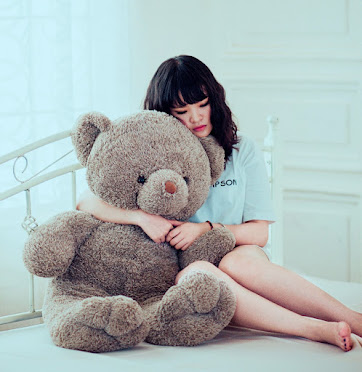What You Need to Know About Giant Stuffed Animals?
Observing a child smothering a stuffed rabbit all day long is rather common. What could possibly be wrong with them? They are kind and lovable. You may not have thought about the significance of stuffed animals to a child's development, however.
A secure bond to a cherished item is something that the majority of children experience at some point. No matter what it is—a cherished stuffed animal, cherished toy, or cozy blanket—your child will develop strong attachments to them and could even want to take them wherever they go. The enormous plush animal needs a closer inspection.
Why Are Stuffed Animals Useful?
The stuffing of stuffed animals might be made of synthetic fibers, cotton, wool, straw, or fabric. Sometimes, coarser things like beans or plastic pellets are inserted within the plush animals. Stuffed animals are unique among toys because of their lovable nature.
They have exaggerated features, including large eyes and small limbs, and a docile disposition to make themselves more appealing. This animal shape, first used in Germany in the late 19th and early 20th centuries, is by far the most popular for enormous plush toys. Nowadays, a lot of people, especially kids, have a lot of plush toys.
What are the Different Types of Stuffed Animals?
Stuffed animals come in a wide variety of shapes and sizes. They are usually solely classified by their outward look because of how much they resemble famous animals or objects. The most beloved plush animal is the bear, sometimes called a "teddy bear."
Your choice of gummy bear, koala, brown, or panda bear design is available among these plush animals. Their size may vary greatly, from keychain-sized to giant teddy bears the size of large recliners, although they are typically about 20 cm tall.
Teddy bears aren't the only lovable plush animals out there. Dogs, cats, and even savannah-dwelling lions, elephants, and giraffes are rather popular.
Even if the term "stuffed animal" implies otherwise, the assumption that all plush toys look like animals is false. Even though the majority of them seem like real animals, several of them are made in a distinct style. Many plush toys have designs inspired by fanciful creatures, stories, or characters from literature, film, and popular culture.
Material Used in Manufacturing Stuffed Animals
Huge plush toys are popular for several reasons, one of which is because they are soft and cuddly. Since they have charming, exaggerated qualities, they are perfect as a source of comfort. The amount of plushness in a stuffed animal is directly proportional to the quality of its construction materials.
The majority of plush toys contain pliable fabrics that make them pleasant to hold and cuddle. The materials used are similar to those that are employed in the production of clothing.
How supple a stuffed animal is is dependent on its inside. Many people choose to use cotton and wood as fillings since they are both natural and gentle. Even after being bent hundreds of times, wool-filled stuffed animals will eventually start to lose their form.
On the other hand, wool will shrink no matter how many times you wash it or dry it. In contrast, cotton-made plush toys are easy to clean because the fabric has been pre-shrunk before stuffing. Plush toys often use polyester fiberfill due to its affordability and lack of allergenic properties.
The original stuffing for teddy bears was mohair fiber or foam, which are common materials for larger and firmer stuffed creatures. You may also use plastic, foam, glass, steel, bamboo, or maize fiber pellets as filler.
The only thing that keeps pellet-filled soft toys in shape is their coating, which makes them very malleable. Young children should not be given stuffed animals that contain pellets due to the small parts that may be inhaled. When stuffing handcrafted plush toys, it's common to utilize felt or scraps of fabric.
Are Plush Toys Safe to Wash In The Washing Machine?
The vast majority of soft toys can be washed in the washing machine. Use a bed sheet or pillowcase to gently wash the stuffed animals in the washing machine on the gentle cycle. If your stuffed animal has holes or other symptoms of wear and tear, you should wash it by hand to prevent it from becoming worse.
You shouldn't put certain soft toys in the washing machine. For soft toys filled with wool, mohair, or foam, it is recommended to wash them by hand. Plus, before you wash the plush animal, make sure it doesn't include any extra materials that may be harmed, like hair or leather.
Conclusion
Ultimately, there are practical uses for enormous stuffed animals beyond just entertainment. From cuddling up with them as bedroom guardians to entertaining audiences as larger-than-life mascots that win over hearts across generations, plush companions serve a practical purpose in our lives.
Also, from providing solace and company to fostering imaginative play and assisting with emotional well-being. So, get your desired stuffed animal or giant teddy bear from BooBear Factory now!



Comments
Post a Comment